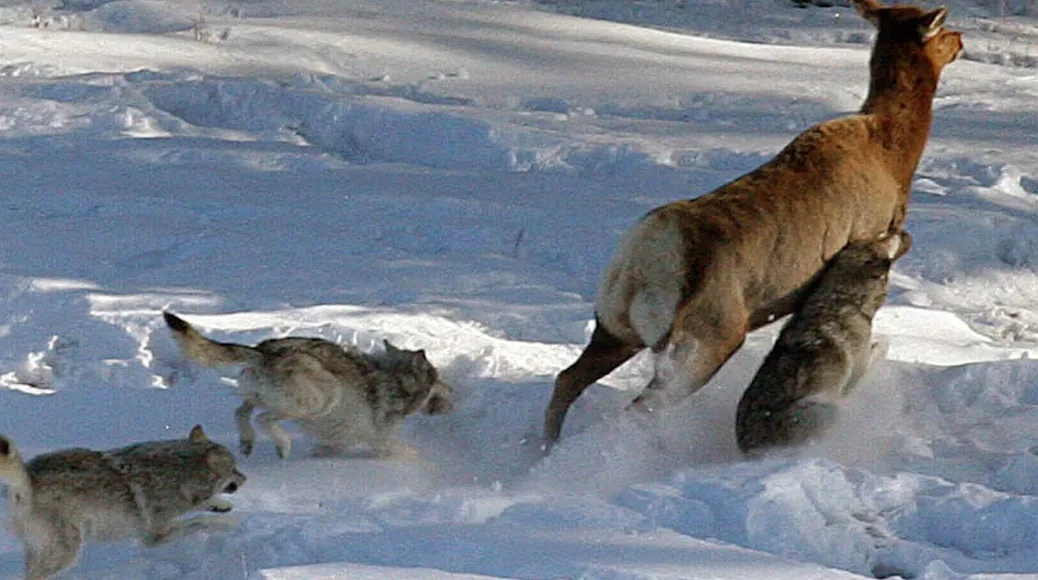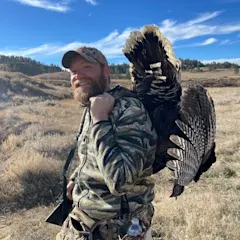On Tuesday, August 5, a District Court judge in Missoula, Montana issued a ruling that could ultimately force the U.S. Fish & Wildlife Service (USFWS) to end hunting and trapping seasons for wolves in three states in the northern Rocky Mountains. The ruling has since been appealed by the Sportsmen’s Alliance, Safari Club International, and the Rocky Mountain Elk Foundation—which means wolf seasons in Idaho, Montana, and Wyoming are still valid for the time being.
In his ruling, Judge Donald W. Malloy took issue with the data USFWS used when it de-listed wolves in northern Rocky Mountains more than a decade ago. “Management of Canis lupus must not be by a political yo-yo process,” Molloy wrote in his opinion, adding that USFWS “failed to use the best available science” in its analysis of the species.
Molloy's ruling comes after a coalition of more than 70 environmental and animal advocacy groups—including the Humane Society of the United States, the Sierra Club, the the Western Watersheds Projects—sued USFWS over its denial of a 2021 petition to re-list wolves in the northern Rockies. Among other things, the groups argued—and Judge Malloy agreed—that state agencies in Montana, Wyoming, Idaho, aren't properly managing wolf populations, and that the Feds need to step in.
"Fish & Wildlife denied the petition but [Judge Malloy] found that the denial was arbitrary and capricious and sent the petition back to the Service to reconsider," lead lawyer for the Sportsmen's Alliance, Micheal Jean, tells F&S. The terms "arbitrary and capricious" are used to describe agency actions made without sound rationale or proper administrative authority. "The judge’s opinion is so strongly worded that there’s only one conclusion they could come to upon reconsideration," Jean adds. "They'd have to grant the petition and re-list the wolves."
Sportsmen's Alliance, RMEF, and SCI filed their appeal in the 9th Circuit. Jean believes it could put Malloy's order on ice for a year or longer. "We're buying ourselves a lot of time with this," he says. "In the meantime, the status of gray wolves will remain the same in the northern Rockies, with hunting and trapping seasons continuing uninterrupted."
He expects that the State of Montana will appeal Malloy's decision as well, along with Idaho and the federal government. "I presume they're going to try to put us in mediation, which we'll contest," he says. "Then we'll spend months filing briefs. I doubt that the 9th Circuit hears oral arguments on this until a year from now. And I doubt it issues a decision for another six months after that."
According to the Rocky Mountain Elk Foundation, there are at least 3,200 wolves in the West—not counting those born this spring. Populations in Idaho, Wyoming, and Montana are all well above the minimum federal recovery levels, the conservation group maintains. At the same time, wolf populations are expanding in California, Colorado, Oregon, and Washington.
Read Next: Colorado Reconsiders Wolf-Release Protocol After Several Transplanted Wolves Die
“This ruling is the latest string of nonstop litigation by environmental groups seeking to frustrate the original intent of the ESA, which is to recover endangered species and return them to state-based management, not keep them perpetually listed and under the authority of the federal government,” Rocky Mountain Elk Foundation President and CEO Kyle Weaver said in a recent press release. “Whether it’s the wolf or the grizzly bear, once an animal receives ESA protections, it becomes nearly impossible to remove them, even if populations meet recovery criteria over an extended period of time. The ESA needs an adjustment to renew its focus on real species recovery.”


